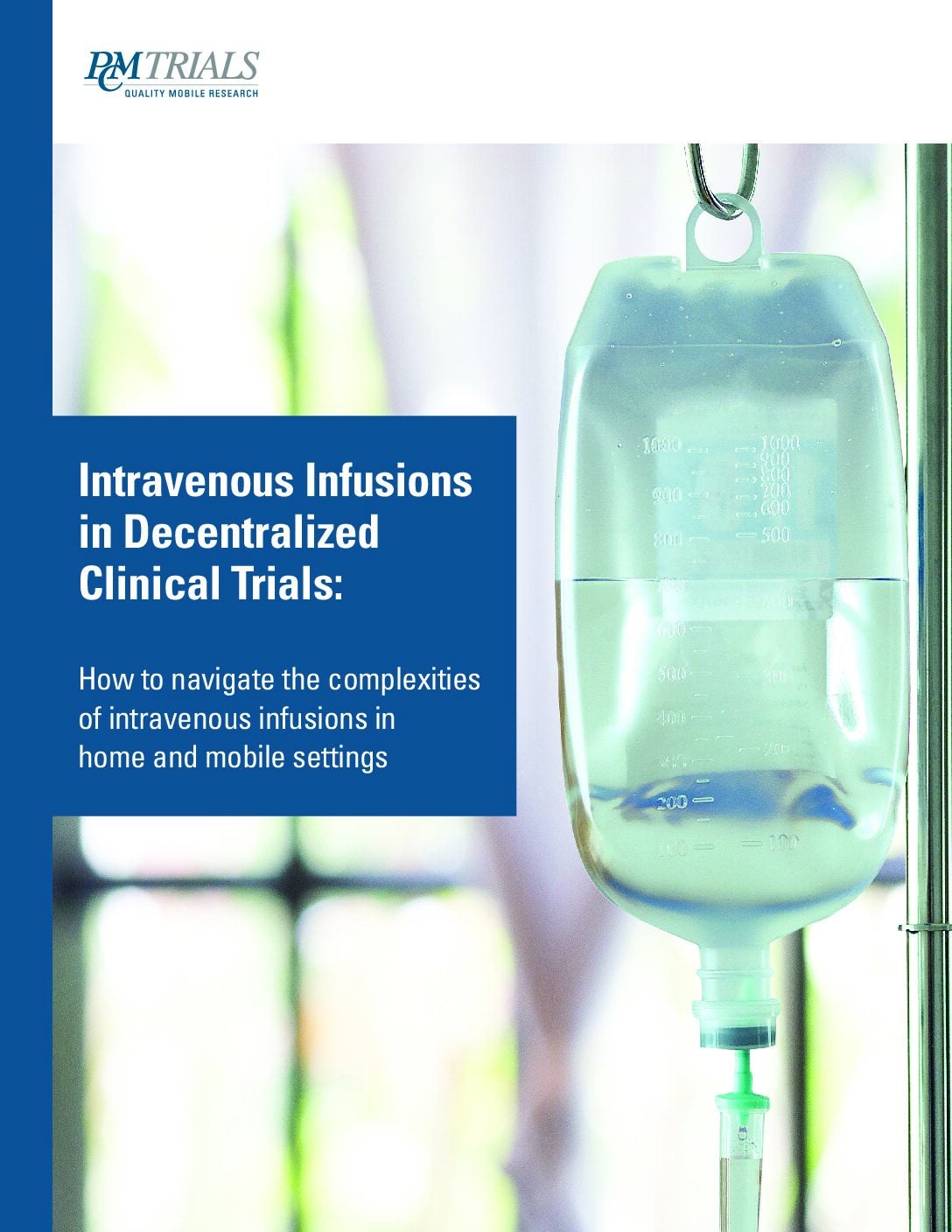
The Clinical Trial Regulation (CTR) (Regulation (EU) No 536/2014) was published on April 16, 2014 and replaces the existing Directive 2001/20/EC. The application date is based on the full functionality of the EU Portal and the EU database and the systems meeting the agreed functional specifications.1
The overarching goals of the CTR are to ensure patient safety, increase accessibility to clinical trials in the EU by supporting cross-border trials, to raise the attractiveness of the EU for the conduct of clinical trials, and to ensure transparency of all studies conducted in the EU.2
How well do you really know your competitors?
Access the most comprehensive Company Profiles on the market, powered by GlobalData. Save hours of research. Gain competitive edge.

Thank you!
Your download email will arrive shortly
Not ready to buy yet? Download a free sample
We are confident about the unique quality of our Company Profiles. However, we want you to make the most beneficial decision for your business, so we offer a free sample that you can download by submitting the below form
By GlobalDataJourney from the Directive to the Regulation
The Clinical Trial Directive 2001/20/EC (CTD) was introduced in April 2001with theobjective of harmonizing clinical trial processes and detailing the legal provisions for GoodClinical Practice (GCP) in the EU.3 A few years after its initial rollout, CTD procedures as implemented in EU countries were broadly criticized by patients, industry and academic research. This was largely due to the increased administrative burden for all stakeholders without real measurable benefits to the patients.4
The criticism was also apparent through the decreased number of applications for clinical trials in the EU which reduced by 25 percent from 2007 to 2011. What’s more, the cost of conducting clinical trials rose due to increased administrative costs and insurance fees, as well as delays in launching clinical trials.5
The Heads of Medicines Agencies’ (HMA) Clinical Trial Facilitation Group (CTFG), which coordinated the implementation of the CTD across the Member states, introduced the Voluntary Harmonization Procedure (VHP) in March 2009 in which a common regulatory assessment step was established.6 The VHP allows a sponsor to obtain a harmonized scientific discussion and a single opinion for any EU multinational CTA. Core documentation is submitted electronically to a single contact address. After initial reluctance to use such a voluntary procedure, over time sponsors started using the VHP alternative more frequently.7
The VHP offers a short- to medium-term alternative to the purely national system ofthe management of clinical trials in the EU. Limited experience also existsfrom some countries on integrating ethics committees in the regulatory review cycle.Also, the VHP is not anchored in any EU directive or regulation, meaning countries canopt out of the procedure if they wish. This results in uncertainties for overall clinicaldevelopment.
In order to address the many challenges the current CTD presents, as well as the limitations of the VHP procedure, the EU Commission has introduced the Clinical Trial Regulation EU No. 536/2014. This regulation enforces the following:
- Harmonized electronic submission and assessment processes for clinical trials conducted in multiple member states
- Improved collaboration
- Information sharing and decision making between and within member states
- Highest safety standards for patients
- Increased transparency of information on clinical trials
This is the most challenging piece of regulation introduced by the EU commission in the last few years. The CTR, when implemented, will lead to greater harmonization of requirements across member states. Together with the submission of a single CT dossier through the EU Portal, the improved assessment process will ensure efficiency of resources for both sponsors and member statesand predictable approval timelines.
Tacit approval and withdrawal mechanisms will support adherence of the procedure. Unless confidentiality is justified, the information submitted to the EU Portal will be published allowing full transparency of ongoing trials and their results to the public.
Safety reporting under the CTR will be streamlined and simplified through EudraVigilance. Assessment of safety information submitted by sponsors will be coordinated between the member states.
This journey to shift from CTD to CTR in all EU countries is a challenging journey for all stakeholders and is clearly reflected in the delayed implementation timeframe from the initially foreseen October 2016 to the second half of 2019.
Challenges of Establishing New Process Steps
The EMA is responsible for establishing the EU portal and EU database ensuring a centralized workflow with monitoring by the respective parties.8 Ensuring full functionality for the different needs of various stakeholders, National Competent Authorities (NCAs) and Ethics Committees (ECs) is a challenging undertaking. The different versions of User Acceptance Testing provide stakeholders and member states the opportunity to contribute to the development of an efficient system.

From the perspective of the pharmaceutical industry, in particular large companies, the CTR will require a change from a frequently de-centralized way of working to a centralized approach. Simultaneous submission of both Part I and Part II will necessitate thorough planning for the availability of national documents for multiple countries.
New ways of working under the CTR may also encourage sponsors to take a broader look at their current trial processes. It’s also an opportunity to revise and align global differences in processes, while establishing new methods around currently evolving topics in the EU, such as revised guidance on the Reference Safety Information.
Additionally, transparency rules respecting confidentiality of personal data and proprietary needs are certainly a step in the right direction. Transparency mandates a lay summary to be available within a year for all clinical trials conducted under the CTR. Lay summaries have so far not been standardly provided by the majority of sponsors, therefore new processes will need to be established by the applicants.
Opportunities Ahead
From an IT perspective, having a full testing system available far ahead of the CTR implementation date, will allow sponsors to align their internal tools and systems in the most optimal way to work with the EU portal and EU database.
The CTR requires NCAs and ECs in all member states to change their work processes around the approval of clinical trials. Member states need to agree internally about the review responsibilities between NCAs and ECs and the workflows between each other. In countries with a currently high number of ECs, efforts are ongoing to reduce the number of ECs and reorganize the ways of working. For an aligned and efficient review process, it will be important that the MSs avoid or keep additional country-specific requirements to a very minimum. Having an overview of these changes and requirement alignment that provides the status of individual member states will be an important aspect for a successful implementation.
The VHP provides a good opportunity to pilot the coordinated assessment between NCAs and ECs. To benefit from this opportunity,it’s essential sponsors ensure that VHP procedure steps, such as the assignment of a reference NCA, run smoothly. VHP challenges may lead sponsors to otherwise opt for national clinical trial approval procedures until the CTR is implemented; this can prevent the opportunity to learn from VHP while adding an additional burden to the transition period.
Status of the Guidances that are being developed to Support the Regulation and Transition Plans
An important question for all stakeholders is the transition from CTD to CTR for ongoing trials. Many clinical trials approved under CTD will still be ongoing after mid-2022. To establish the plans for transition and to have the additional resources in place, sponsors are therefore anxiously awaiting additional guidance from the EU commission on the details.
From a timing perspective, while the CTR provides a transition period of three years, the VHP will cease to exist following implementation of the CTR. Sponsors will therefore likely aim to transition these trials as soon as the CTR has been implemented.
The need for a re-assessment of ongoing clinical trials during the transition should be avoided. To achieve this, for multinational trials, wherever the clinical trial documentation is not aligned across participating member states, a substantial amendment will likely need to be submitted under CTD. The transition to CTR can likely only be submitted following consolidation of documentation.
Detailed guidances for the CTR in line with currently available ‘CT-1’ (2010/C 82/01) and ‘CT-3’ (2011/C 172/01) for CTD will furthermore enable sponsors to understand the specific requirements under the future regulation. Already published guidelines, such as lay summaries and risk-based approaches already allow sponsors to prepare for certain requirements under the regulation.
All stakeholders adapting to the challenging journey from CTD to CTR will be key for the EU to be an attractive place to conduct clinical trials, and improving the access for EU patients to the newer and better therapies.
Surendra Gokhale
Capability Development Leader
Claire Berry
Group Manager, Clinical Trials Regulatory Management
Roche
References:
- Regulation (EU) No 536/2014 of the European Parliament and of the council of 16 April 2014 on clinical trials on medicinal products for human use, and repealing Directive 2001/20/EC
- Clinical trials: clearer rules, better protection for patients, New European Parliament, 20 December 2013, http://www.europarl.europa.eu/news/en/press-room/20131220IPR31630/clinical-trials-clearer-rules-better-protection-for-patients Or Glenis Willmott, New EU Rules on Clinical Trials, 3 April 2014, https://www.youtube.com/watch?v=t6yIyYIK3Nk
- European Commission. The Rules Governing Medicinal Products in the European Union, Volume 10, “Clinical Trials Guidelines.” – http://ec.europa.eu/health/documents/eudralex/vol-10/index_en.htm.
- Assessment of the Functioning of the “Clinical Trials Directive” 2001/20/EC, Public Consultation Paper. Brussels, 9October 2009 (ENTR/F/2/SF D(2009)). European Commission website. http://ec.europa.eu/health/files/clinicaltrials/docs/2009_10_09_public-consultation-paper.pdf.
- European Commission. Proposal for a Regulation of the European Parliament and of the Council on clinical trials on medicinal products for human use, and repealing Directive. http://eur-lex.europa.eu/legal-content/EN/TXT/PDF/?uri=CELEX:52012PC0369&from=EN
- CTFG//VHP/2016/Rev6 June2016 (http://www.hma.eu/fileadmin/dateien/Human_Medicines/01-About_HMA/Working_Groups/CTFG/2016_06_CTFG_VHP_guidance_for_sponsor_v4.pdf)
- Krafft H, Bélorgey C & and Szalay G. “Experience and further development with the Voluntary Harmonization Procedure formultinational clinical trials in the European Union.” Nature Reviews Drug Discovery 11, 419 (May 2012) | doi:10.1038/nrd3202-c2. www.nature.com/nrd/journal/v11/n5/full/nrd3202-c2.html.
- 8. Functional specifications for the EU portal and EU database to be audited, 25 March 2015, EMA/42176/2014 Rev. 1.




